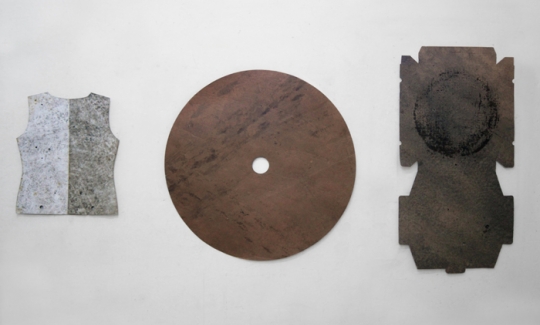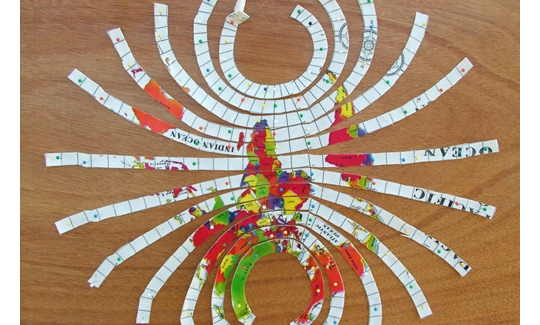Eden Bannet: Studiolo
Curator: Rotem Ruff
Saturday, 06.02.10
Saturday, 17.07.10
More info:
04-6030800In the installation Studiolo, Eden Bannet explores the aesthetics of the studiolo - a combination of a study, a lab, and a cabinet of wonders where Renaissance aristocrats displayed rare and exotic objects. This was one of the first manifestations of the modern understanding of human subjectivity as an unlimited inner space available for scrutiny. As the physical epicenter of its owner's intellectual and mental life, the studiolo was identified with this inner sphere. It was the first instance in which a distinction was made between the space in which an artwork is created, i.e., the "studio," and a space that constitutes an artwork in its own right - a work in which surprising objets and various visual and material parallels are combined into an integral whole. Yet in contrast to this rarefied aesthetic, the artifacts Bannet presents are composed of cheap, mass-produced materials and images found while wandering through streets, stores and virtual spaces.
Based on the exhibition model of the studiolo, Bannet presents a kaleidoscopic installation in which a range of items come together to form new objects. The manner in which she combines things enables her to diverge from the accepted functional definitions of various objects, and to suggest new, unfamiliar, and mostly humorous ways of using them.
Like the act of collecting, whose internal logic is neither fixed nor arbitrary, Bannet attempts to endow objects with new meanings, based on a playful internal logic and on visual arrangements that are not compatible with their original purpose. Functionality gives way to an emphasis on materiality, color and the relations between objects. So, for instance, bits of wood tied together with parcel string call to mind a traditional musical instrument and smashed cardboard boxes are stretched out across the wall like animal skins. Bannet describes this tactic as "visual rhyming," and attempts to call the viewer's attention to the internal, formal syntax of the works and to the multiple interpretive possibilities they contain. She offers a refreshing perspective on the most banal elements of everyday life. Her works give rise to a magical sense of wonderment born of the encounter with the world, and to the subsequent attempt to contain and process it by creating systems of order and classification - the two fundamental elements underlying every act of collecting.


